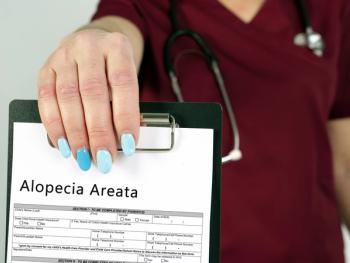
Real-World Data Highlight Benefits of Thymectomy in Patients With NTMG
However, few patients with nonthymomatous myasthenia gravis (NTMG) undergo this procedure, results suggest.
Individuals with
Findings from the real-world data analysis were published
The Myasthenia Gravis Foundation of America’s guidelines indicate patients aged 18 and 50 years with NTMG benefit from thymectomy, researchers explained. In addition, clinical trial results show “patients with NTMG undergoing thymectomy plus alternate-day prednisone have reduced disease severity and lower steroid requirements, as well as less need for NSIS [nonsteroidal immunosuppressive agents] compared to those treated with prednisone alone.”
In the current study, the researchers sought to investigate utilization of this procedure in clinical practice.
Data were gleaned from the Optum de-identified Clinformatics Data Mart (CDM) Claims Database from 2007 to 2021. Patients had received a thymectomy within 1 year of an MG diagnosis and “only those with a prescription for pyridostigmine within 3 months of the MG diagnosis were included,” the authors wrote.
CDM covers around 17 to 19 million patients each year. The researchers calculated NTMG-related costs based on the CDM standard price.
Of the 1298 patients who received pyridostigmine for NTMG, 45 underwent a thymectomy. In 24 of these cases (53.3%), the procedure was performed via a minimally invasive surgery, while the remainder underwent an open approach.
Individuals who underwent minimally invasive surgery had a significantly shorter hospital length of stay than those who underwent an open thymectomy.
Analyses also revealed these findings when comparing the pre- and postoperative periods:
- Steroid use increased: 53.33% to 66.67% (P = .034)
- Use of rescue therapy decreased: 44.44% to 24.44% (P = .007)
- Average costs of rescue therapy decreased: $13,243.98 to $8486.26 (P = .035)
- Two readmissions associated with thymectomy occurred within 90 days (4.44%)
- Costs associated with steroid and NSIS use remained stable
- NSIS use remained stable
- Hospital admissions and emergency department visits related to NTMG remained stable
“In a selected population, thymectomy affords a clear benefit to patients with NTMG and should be considered more often in these patients to minimize use of rescue therapies and possibly improve long-term outcomes,” the researchers wrote.
Despite guidelines and clinical trial results that point to the benefit of thymectomy in this population, few patients with NTMG underwent the procedure, they found. This could be because the study window included years before the procedure was incorporated into evidence-based guidelines, the authors added. An additional factor that may have impacted low rates could be patients’ inability to access experienced thoracic surgeons.
“Concerns regarding surgical morbidity, and lack of awareness of the disease-specific benefits associated with resection from both a provider and payer perspective,” may have also played a role, the researchers noted.
The authors hypothesize the increased use of steroids observed during the short-term postoperative period could be due to the
As included patients were only within 1 specific claims database, the results may not be generalizable. In addition, the limited sample size meant the analysis was restricted to the periods immediately before and after surgery, while a long-term analysis in a larger population may yield additional valuable data. Metrics on patients’ quality of life and assessments of MG severity also were not included in the claims data.
Overall, “in patients with NTMG between the ages of 18 and 50, thymectomy appears underutilized despite safe perioperative outcomes and a significant reduction in the need for rescue therapies postoperatively,” the authors concluded.
Reference
Deboever N, Xu Y, Feldman HA, et al. Outcomes after thymectomy in non-thymomatous myasthenia gravis. J Thorac Dis. Published online May 8, 2023. doi:10.21037/jtd-22-1589
Newsletter
Stay ahead of policy, cost, and value—subscribe to AJMC for expert insights at the intersection of clinical care and health economics.















































